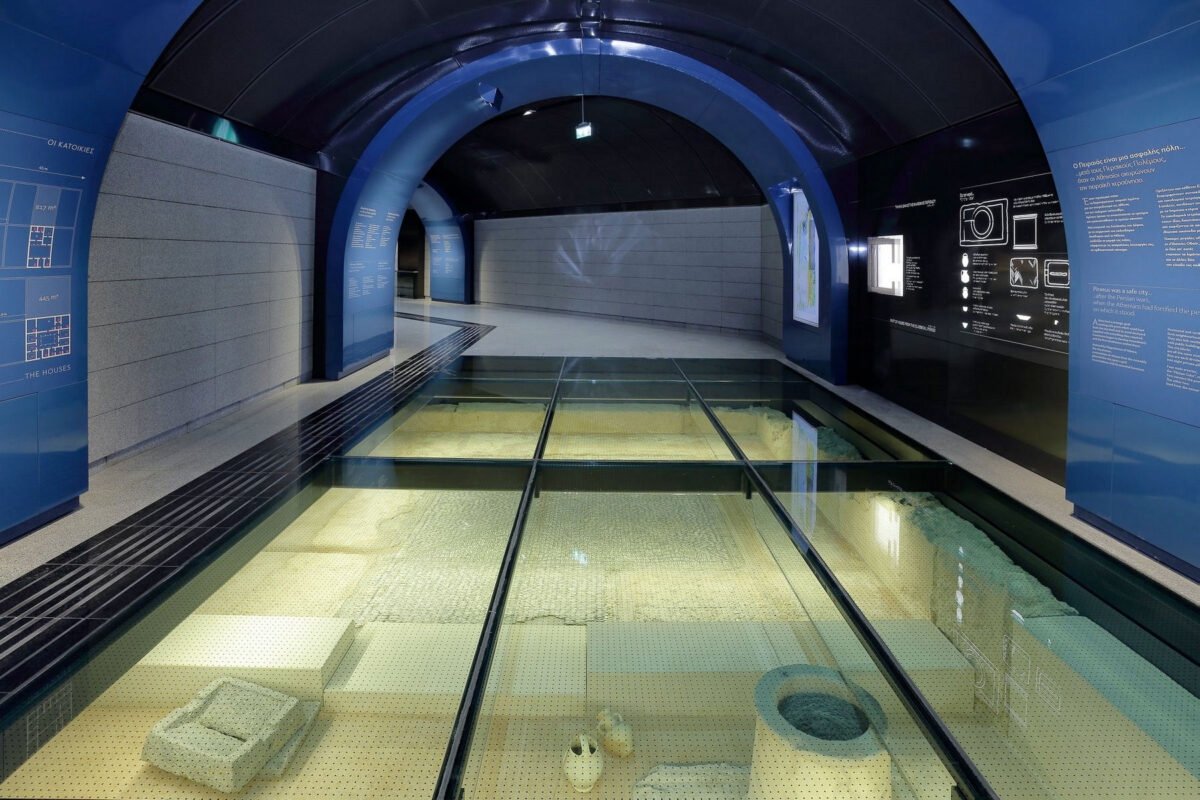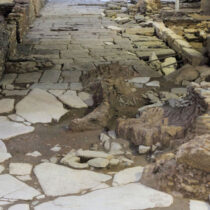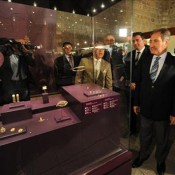The permanent exhibition highlighting the water supply system of the ancient city of Piraeus at the “Municipal Theater” station opened to the public yesterday with the three Piraeus Metro stations inaugurated by Prime Minister Kyriakos Mitsotakis. The Minister of Culture and Sports Lina Mendoni spoke about the believe of a harmonious coexistence between archaeology and the Metro, the principle being respect for archaeological findings without them becoming an obstacle to implementing large-scale infrastructure projects.
During the largest ever research excavation carried out in the city of Piraeus, 150 structures were discovered related to ancient aquatic systems, a feature of the ancient city. These come as an addition to the more than 345 wells and 388 cisterns already found in earlier excavations in the city.
The total area archaeologically controlled by the Ephorate of Antiquities of Piraeus and Islands in 5 Stations and 7 Ventilation Shafts is close to 30,000 sq.m., with the rescue excavations being conducted over a total surface of 7,500 sq.m. All the excavation work was carried out under constant archaeological monitoring, as well as the opening of the 7.6 km of the railway tunnel.
In her speech, the Minister of Culture and Sports, Lina Mendoni, said: “As a consequence of Greek culture’s long historical duration in time and space the activities of the modern era intersect with material evidence of the past preserved underground.
“The term ‘archaeological palimpsest’ is used to refer to the overlapping layers of material remains of human activity which has continued for centuries in the same places, especially in the urban fabric of our cities. In the case of a large area or the wide geographical distribution of public utility infrastructures, this meeting between the works of today and the tangible evidence of history becomes almost unavoidable.
“A technical project, the Metro in this case, is the cause for the largest research excavation ever been done in the city of Piraeus, conducted with innovative methods and in a way that sets a standard ” pointed out the Minister
“The Ministry of Culture requested the Attiko Metro to set up a permanent exhibition at the ‘Municipal Theatre’ station on the Water Supply System of the ancient city of Piraeus. This was particularly challenging for the Ephorate of Antiquities since the museum exhibition had to be integrated into a crowded and bustling space. The main idea as the starting point for creating the museological concept was : “The connection of water management with the historical and social development of the city of Piraeus from the Classical period to Late Antiquity.
“The station and Piraeus’ city centre now have an archaeological exhibition that can act as a starting point for the interconnection through cultural routes of the Neosoiki area and the Theater of Zea with the Archaeological Museum and of the residential and fortification remains visible in the open archaeological sites of the modern city, creating a dynamic nexus of culture”, said Lina Mendoni.





